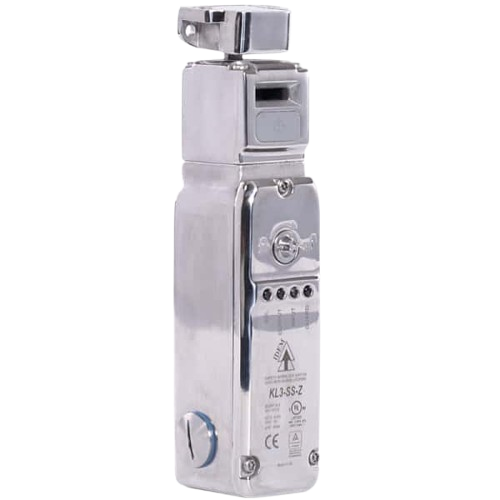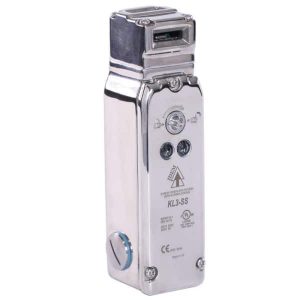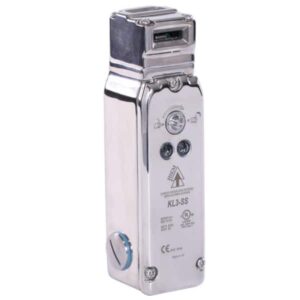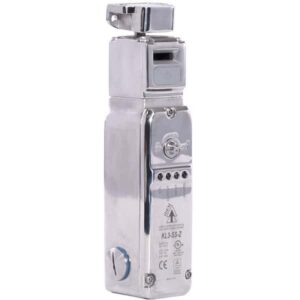Importance of Mechanical Interlocks in Industries Ensuring Safety Mechanical interlocks are a fundamental component in protecting personnel from dangerous machinery and ensuring safe access during…
Importance of Mechanical Interlocks in Industries
Ensuring Safety
Mechanical interlocks are a fundamental component in protecting personnel from dangerous machinery and ensuring safe access during maintenance or operational changes. By enforcing a key sequence that mandates the correct shutdown procedure before access, these systems help prevent unexpected start-up, supporting electrical isolation and the isolation of machinery. Whether integrated into machine guards or access through gates, their function contributes to reducing workplace accidents and enhancing operator confidence.
Facilitating Control
Mechanical interlocks provide precise control over the sequence of operations in industrial settings. For example, key interlock systems can be configured to require multiple actions before machinery is activated, ensuring that all safety conditions are met. This structured approach is particularly useful in robot cells or boxes in robot cells, where the controlled access to hazardous areas is critical. Trapped Key Interlock Switches, combined with safety relays, deliver an effective control solution that complements broader automation safety strategies.
Meeting Compliance Standards
Industries operating in harsh environments or dealing with dangerous machinery must meet strict compliance requirements. Stainless steel mechanical interlocks support conformance to national and international standards for safety, including those related to solenoid voltages and actuator types. Their robust design ensures long-term performance in line with the regulatory expectations across sectors like food, pharma, and heavy industry.
Core Components of Mechanical Interlocks
Keys
Keys in mechanical interlock systems are not ordinary. These are precision-engineered components tied to a specific sequence of operations. Their removal and insertion control access, trigger actuator response, and form the basis for safe machine shutdowns and restarts. In stainless steel variants, the steel structure of the key adds strength, ideal for challenging environments.
Locks
Locks are designed to hold keys until it is safe for them to be released. Stainless steel construction enhances the durability of these locks, especially in washdown applications like food processing. The holding force ensures secure engagement, which is critical when power wires and safety contacts are involved.
Actuators
Actuators interact with mechanical or electrical systems to engage or disengage the interlock mechanism. A wide range of actuator types exists to suit diverse application requirements. From rotary to linear actuators, they form the mechanical link between moving parts and the interlock switch, securing safe access and reliable operation.
Applications of Stainless Steel Interlocks
Food Processing
In food processing, hygiene and durability are essential. Stainless steel mechanical interlocks are ideal due to their corrosion resistance and suitability for washdown environments. These interlocks prevent access to high-risk areas while allowing safe maintenance during downtime, all while complying with food-grade hygiene regulations.
Pharmaceuticals
Pharmaceutical manufacturing demands a sterile environment. Stainless steel interlocks support contamination control through their smooth surfaces and resistance to cleaning agents. The sequence of operations controlled by the key interlock ensures that safety protocols are followed before any manual intervention.
Other Industrial Applications
From mining to automotive manufacturing, stainless steel interlocks serve a broad spectrum of industries. Their ability to function in harsh environments while maintaining mechanical strength makes them a cost-effective solution for facilities managing dangerous machinery and requiring robust safety infrastructure.
Types of Interlocks
Mechanical Interlocks
These interlocks use physical keys and locks to enforce safety procedures. The mechanical link ensures electrical isolation and prevents accidental access. Common in settings where fail-safe operation is required without dependence on electrical systems.
Electrical Interlocks
Electrical interlocks interrupt power flow to equipment. Often paired with safety contacts and relays, they provide immediate shutdown in emergencies. These are beneficial in modern automated setups where integration with control systems is vital.
Logic Interlocks
Logic interlocks use programmable logic to enforce sequences. While not always physical, they complement mechanical and electrical interlocks by managing the logic-based flow of operations, ensuring machinery behaves in a predictable and safe manner.
Advantages of Stainless Steel Interlocks
Durability
Stainless steel interlocks offer exceptional durability. The robust design ensures performance in demanding conditions, including frequent operation and exposure to cleaning agents, heat, or impact.
Corrosion Resistance
Especially important for washdown applications, stainless steel construction resists rust, corrosion, and chemical attack. This makes the devices suitable for food, beverage, and pharmaceutical environments where regular sanitization is required.
Hygiene in Food-Grade Applications
Smooth finishes and sealed housings reduce bacterial buildup. Stainless steel mechanical interlocks comply with hygiene regulations, making them a preferred choice in food-grade installations where cleanliness cannot be compromised.
Industry Standards and Compliance
Technical Standards for Safety
Stainless steel mechanical interlocks adhere to strict international safety standards. These include norms for isolation of machinery, electrical isolation, and use with safety relays and actuator types. Compliance ensures both operational and legal peace of mind.
Regulations for Food-Grade Use
In food and pharmaceutical sectors, regulations mandate materials that withstand washdowns and do not harbor contaminants. Stainless steel interlocks meet these requirements, offering both material compliance and operational control in environments with hygiene-critical processes.
Innovations in Mechanical Interlocks
Advances by Leading Manufacturers
Modern innovations focus on refining mechanical interlocks to offer wider application compatibility, extended product range, and enhanced safety features. Leading edge designs now include modular systems for flexibility, compatibility with various solenoid voltages, and customization for unique key sequences or actuator types. Manufacturers like Idem have contributed significantly to this space, offering an extensive range of stainless steel mechanical interlocks designed for challenging environments and tailored to application requirements. Their solutions combine reliability, hygiene compliance, and smart integration features that elevate traditional interlock systems.



